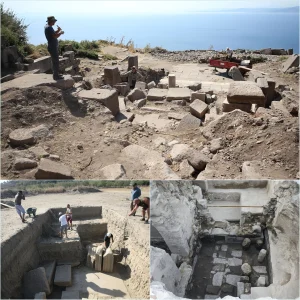A prehistoric human skeleton found alongside wild animal remains may belong to a female “shaman” from around 12,000 years ago, according to a recent study.

Unearthed in 2019 at the Neolithic site Çemka Höyük in Turkey, this burial dates back to approximately 9300 B.C. during the Pre-Pottery Neolithic A (PPNA) period. Located in Dargeçit, Mardin province, southeastern Turkey, Çemka Höyük provides crucial insights into ancient burial practices.

The burial site, identified as ÇH2019/05, was discovered within the remains of a roundhouse structure. Although part of the grave was damaged by road construction, the majority was preserved. Unusually, the grave was covered with long, flat limestone blocks, a rare feature for PPNA burials.

The skeleton, buried in a prone position facing west, was confirmed as that of an adult female aged 25 to 30 at the time of death. She was interred with various animal remains, including bones from extinct aurochs cattle, a small ruminant, a partridge, a canid, and a marten.
The study, published in *L’Anthropologie*, suggests that the combination of human and animal remains might indicate the woman was a shaman or that the burial was conducted by someone practicing shamanism. This discovery could represent one of the earliest known examples of shamanistic practices in the Neolithic Anatolian context.
The authors propose that the burial reflects symbolic connections between the animals and the early sedentary people of Çemka Höyük, who were beginning to adopt more settled lifestyles.





